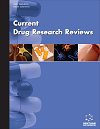
Full text loading...

Escalating healthcare costs and increasing demands on healthcare systems have increased the need for efficient resource allocation. Pharmacoeconomics is a vital field that quantifies and compares the value of therapeutic drugs or treatments. It provides a systematic framework for decision-makers in the pharmaceutical industry, government, and private sectors to optimize healthcare delivery and spending. This review aimed to explore the role of pharmacoeconomic models in assessing the economic and clinical value of therapies. It emphasizes the importance of cost-effectiveness, cost-utility, cost-benefit, and cost-minimization analyses in balancing costs with outcomes and guiding healthcare resource allocation.
Pharmacoeconomic methodologies focus on assessing the costs, processes, and outcomes associated with therapeutic interventions. Key methods include cost-minimization, cost-effectiveness, cost-utility, and cost-benefit analyses. These approaches are critical in regulatory compliance, reimbursement decisions, cost assessments, and sustaining pharmaceutical models.
This review reveals that pharmacoeconomic approaches such as Cost-Effectiveness Analysis (CEA), Cost-Utility Analysis (CUA), and Cost-Benefit Analysis (CBA) are widely used to guide healthcare policy decisions, particularly in resource-constrained settings. CEA is the most commonly applied method due to its simplicity, while CUA is gaining traction in advanced policy frameworks like Health Technology Assessment (HTA). In India, pharmacoeconomic research is emerging but faces barriers such as limited access to real-world data, the absence of national reimbursement systems, and high out-of-pocket costs. Innovative methods like machine learning and pharmacogenomics are being explored to improve the relevance and precision of these evaluations.
While pharmacoeconomic models offer valuable insights for healthcare decision-making, their real-world impact is limited by inconsistencies in data quality and variations in implementation standards. In India, fragmented governance, low public health spending, and a lack of coordination among stakeholders further hinder effective application. Addressing systemic challenges-such as establishing interoperable data systems, standard treatment guidelines, and equitable healthcare access-is crucial. Tailored approaches, including localized utility values and digital health initiatives, are essential to make pharmacoeconomics a practical and influential tool in policy formulation and resource allocation in India and similar settings.
Pharmacoeconomic studies evaluate clinical efficacy, adverse effects, and production costs while incorporating perspectives from patients, providers, payers, and communities. For India, unique challenges such as limited rural healthcare access, infrastructure disparities, and high out-of-pocket expenses necessitate tailored adaptations. Strategies such as integrating accessibility metrics, localized data, equity considerations, preventive care, tiered pricing, and public-private partnerships can enhance healthcare delivery. Pharmacoeconomic models are essential for improving health outcomes, ensuring equitable resource allocation, and addressing the diverse needs of India.

Article metrics loading...

Full text loading...
References


Data & Media loading...